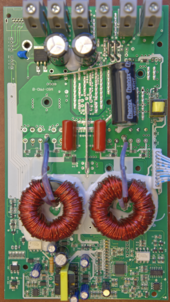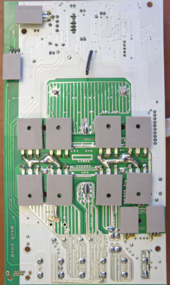What did you end up getting?
Word to the wise -
Adding batteries in parallel -
Fully charge all batteries before connecting
use a bus bar of sufficent size for the current all batteries can put out (i.e. 4 x 200amp batteries = 800a bus bar, you can fudge here a bit IF it is mounted in metal or on a non-flamable surface)
If your cables from battery to bus bar are longer than 12" put a fuse on both ends - MRBF on the battery posts and either MRBF or class T at the bus bar end.
Make sure to use a class T between the bus bar and the inverter.
The reason for the extra precautions is with 3 or more batteries in parallel a short either from a defect inside a single battery or from shorting at the battery post of one of them. All the current from the other batteries will be dumped through the bad batteries wire to the short.
i.e. 4 x 200ah batteries = 800amps total. Assume one has an internal short. Now the current from the other 3 (600amps) will be pulled into the short. Even 2/0 cable will get hot enough to melt the insulation off in a single second.
Now, when I am building a setup like that I prefer to use cables capable of my battery current - then the fuse is sized 125% of that.
So 200amp battery = #2 welding wire (204amps) and a 250amp fuse at both ends of the wire. The alternative is to use 2/0 and fuse at the bus bar end. This depends on the internal BMS to cut current if there is a short on it... BMS fuse shorted if they blow... But you can decide if you want to take that risk.,
for 100amp batteries in parallel I would use #2 windy nation welding wire and 125amp fuses on each.
It never hurts to use larger wire than needed.
Yea, I currently have 10" 2awg wires between both batteries in parallel, as I add more I think I'm going to need a bus bar setup. Should I fuse each battery for safety? I currently don't have any fuses since I only have 2 batteries but I know that will change in the future...
I'd ideally like to go to a 24V system but I might have to wait for that.
I was able to get a good "deal" on the Pow-M60-Pro controller. I've seen some controversy regarding the quality of the controller but apparently I didn't learn from my first experience with the 40A so I'm willing to test out the 60A version...lol
I'm not too concerned about pulling heavy loads with my setup. If anything, I'll likely max out around 500W max with what I currently have hooked up to my inverter. The inverter alone is only 1200w so even if I get into a situation where I need it to run a fridge/freezer as backup power in-case of a power outage from the grid, I still won't be pulling a ton of power.
Quite honestly, long-term in this home might be up in question which is why I'm less likely to invest more and more into a full blown solar setup. The home is soo incredibly inefficient since it was built in 1948 that I don't expect even the best system to be able to power this home entirely off grid... In the summer, I'm using around 50-70KW daily...
If I had to guess, I'll probably pick up 2 or 3 more batteries, build some type of cart/wheeled storage container for everything and call it a day...
Oh and with the size of each full size container for the 100AH batteries, at some point when I get 4 or 5 batteries, I'd like to disassemble each one and consolidate just the cells and BMS into a smaller form factor...so that would also likely change the wiring setup. The full size battery cases for these 100AH batteries are a complete waste of space ATM...




